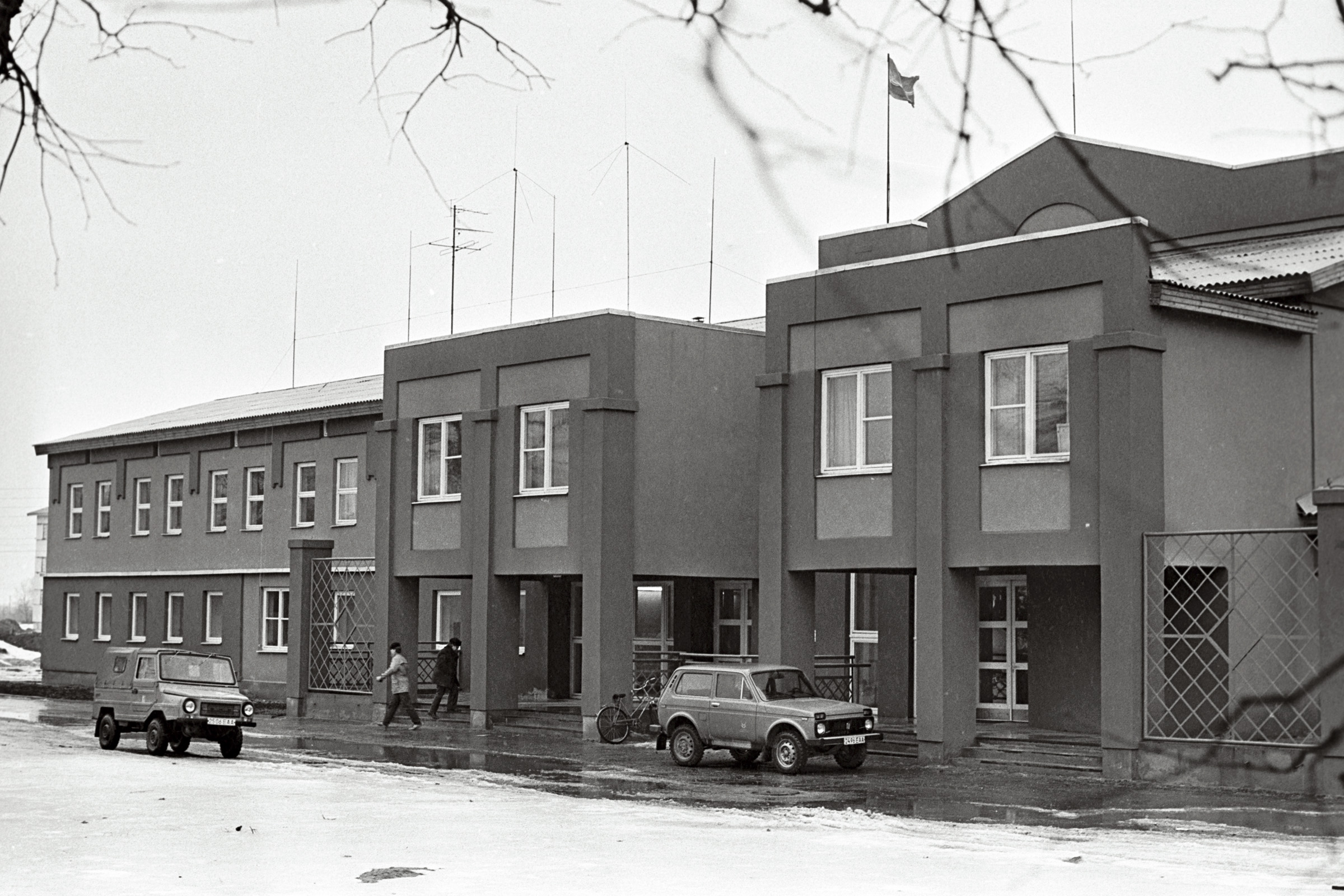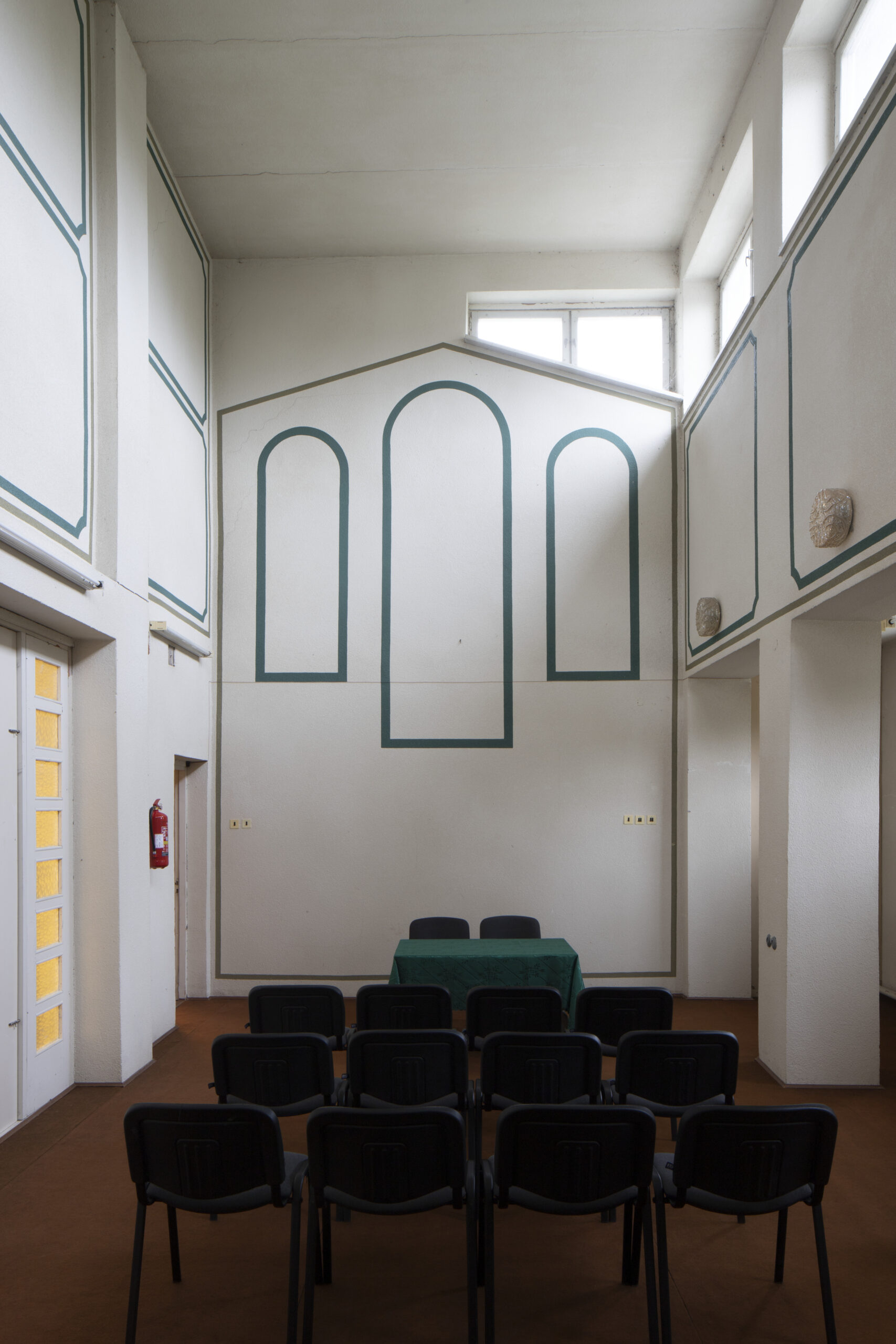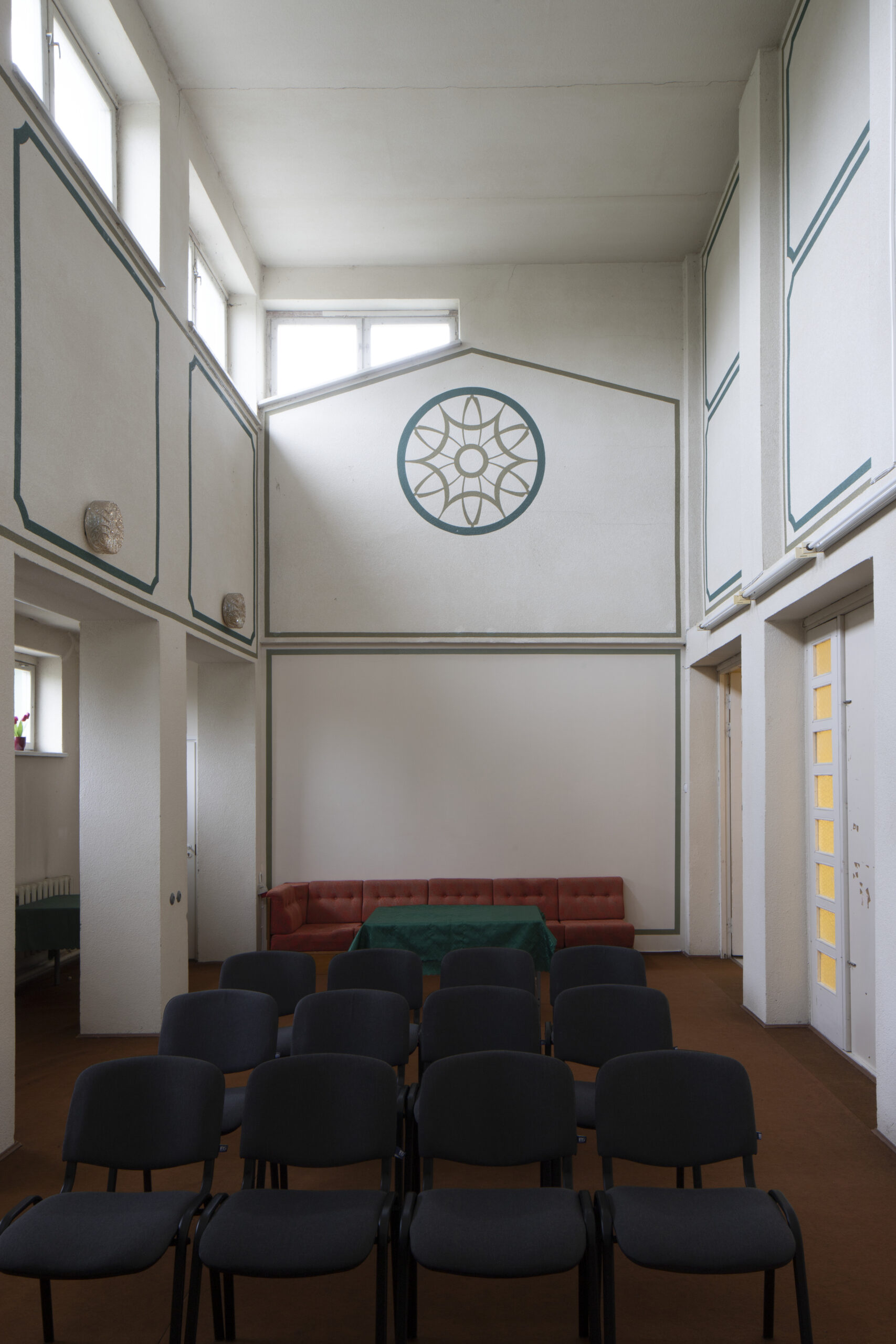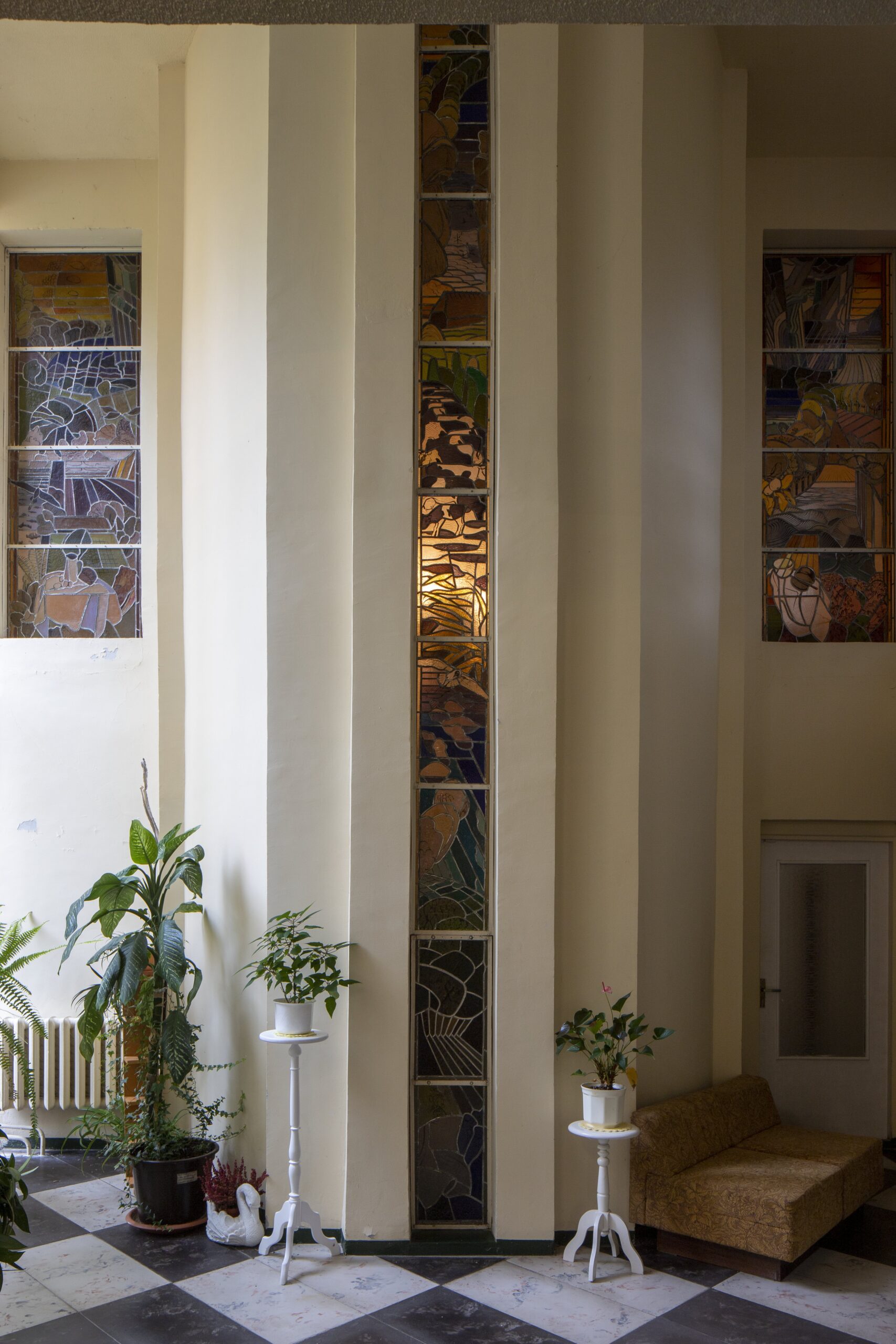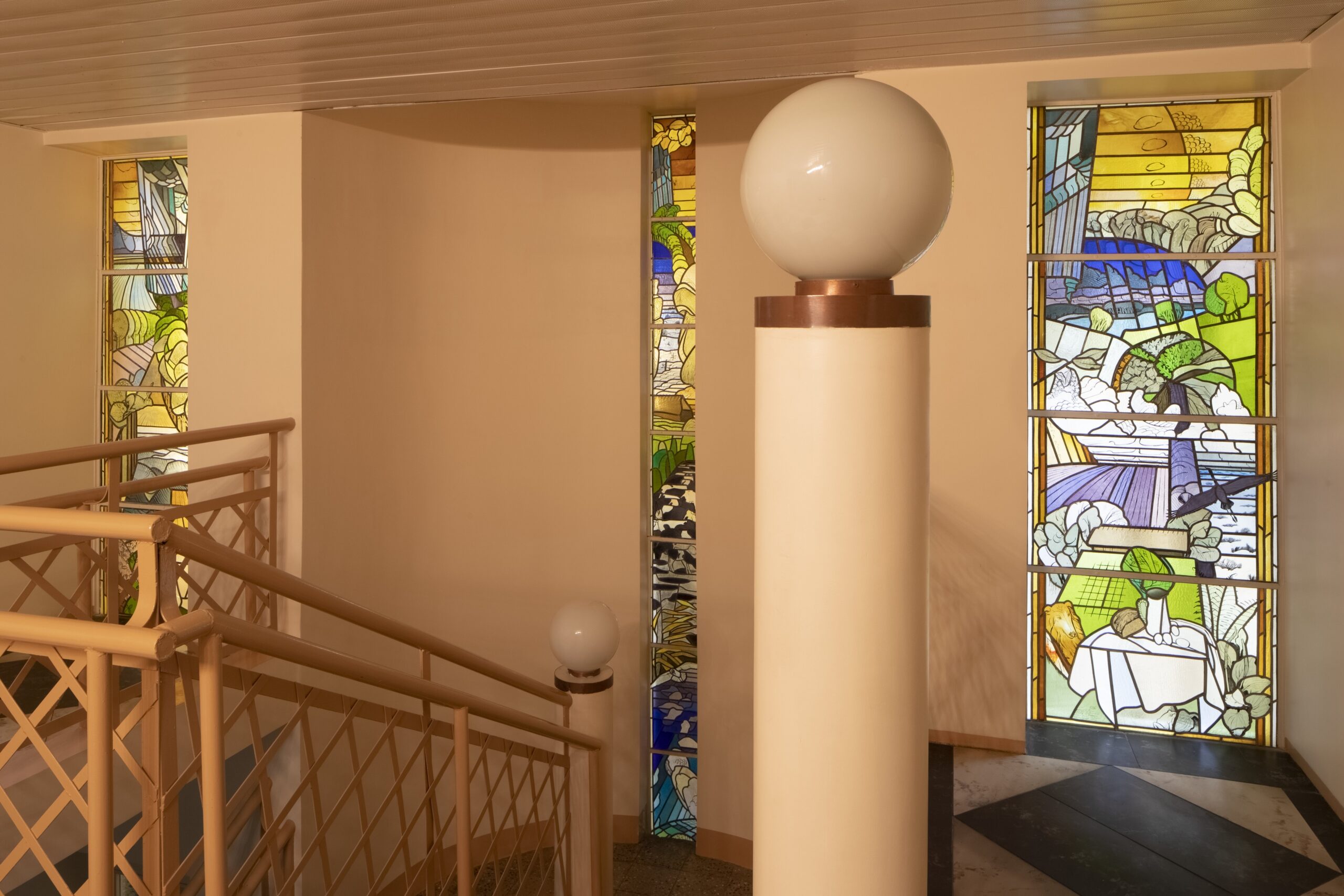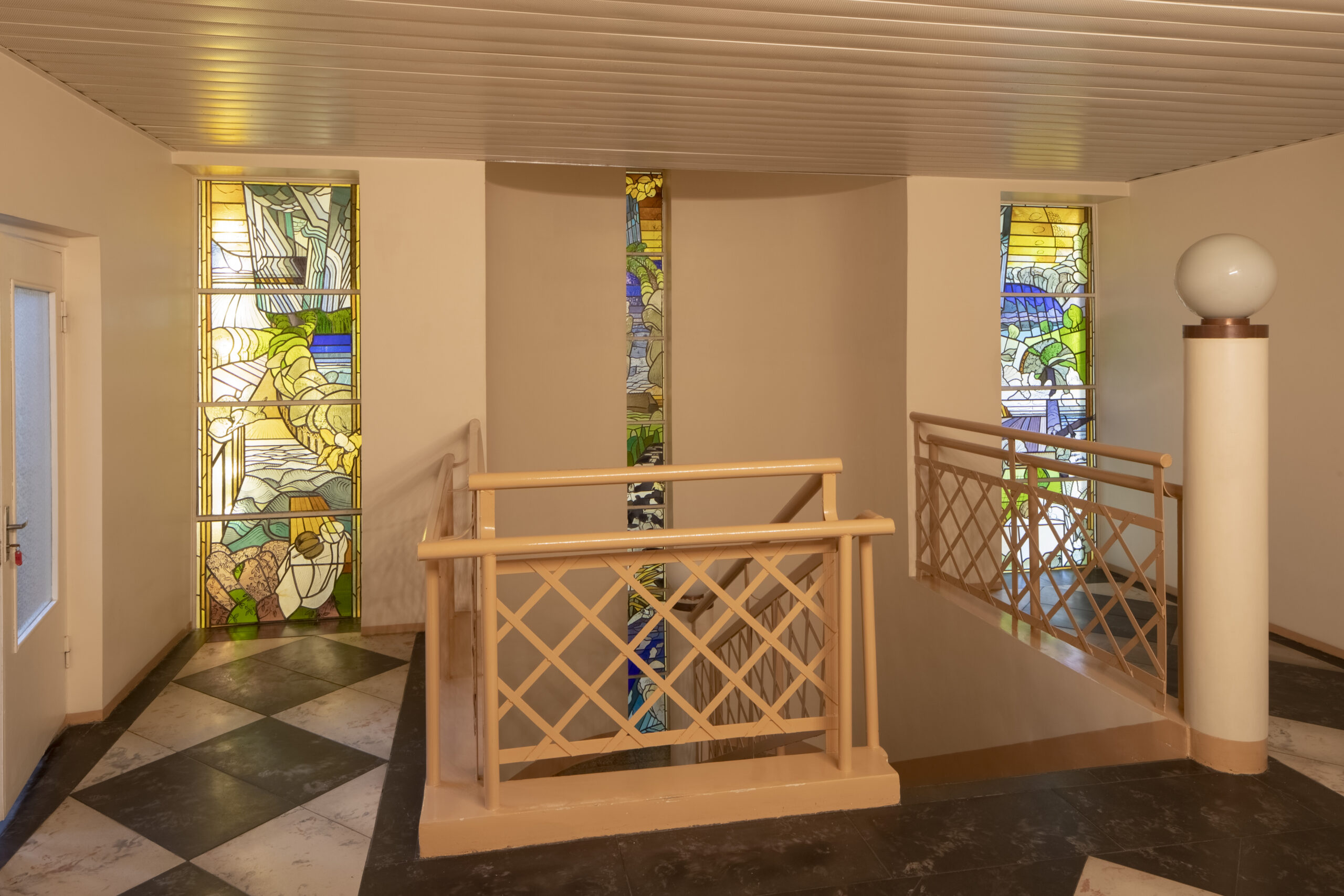Stained-Glass windows of the Raikküla Collective Farm Centre and Compositions in the Library
Year of completion: 1985
Address: Rapla County, Raikküla, Kontori
Author of stained-glass window Dolores Hoffmann, author of interior design Aet Maasik
Not under conservation as a cultural monument
The office- and clubhouse of the Raikküla collective farm (architect Ain Padrik, interior architect Aet Kuusik) is one of the most remarkable examples of postmodernist rural architecture. The building resides between a modern residential area and a historical manor complex. In a dialogue with the Raikküla manor ensemble, the building entwines elements referring to neoclassical architecture (columns, pediments, pilasters) and elements characteristic of standard Soviet Era architecture. The building is made grandiose by the manor-like entrance and lower side wings, with one side planned as an office and the other as a club with a commodious hall and café.
The centre’s library was situated in a chamber hall reminiscent of a chapel. The idea for the room can be traced back to the traditions of manor architecture, which often included a family chapel in the manor ensemble. The architect conceptually equated the centre’s library with a chapel in order to provide visitors with silence and peace of mind. On one of the room’s walls is a three-part geometric composition alluding to the altar area of religious buildings and opposite to it is a rose window motif, both designed by Aet Maasik. The locations of chapel panel paintings marked on the side walls. Ain Padrik and Aet Maasik’s design creates a clean, bright, and peaceful atmosphere.
Upon entering the building’s vestibule, a view opens to Dolores Hoffmann’s colourful stained-glass depicting a stylised Estonian landscape, and towering through multiple storeys as narrow window openings. A love for the author’s homeland shines through the stained-glass windows: they portray a threshing and drying barn with a thatched roof, and an apple tree branch, green meadows and blue flowing rivers, and black-and-white cattle. The stained-glass windows with an impressive colour range divide the vestibule into two and are observable indoors from both sides. The light shining through the stained glass creates a grandiose ambience characteristic of religious architecture in the vestibule.
After the end of the collective farm era, the property of the Raikküla collective farm was taken over by LLC Raikküla Farmer, who organised renovation works in the building in 2018. The stained-glass, preserved in its entirety, is considered the pride of the former building – chairman of the company Tõnu Rahula would gladly see even more stained-glass pieces by Hoffmann decorating the building in the future.
Anna-Liiza Izbaš







